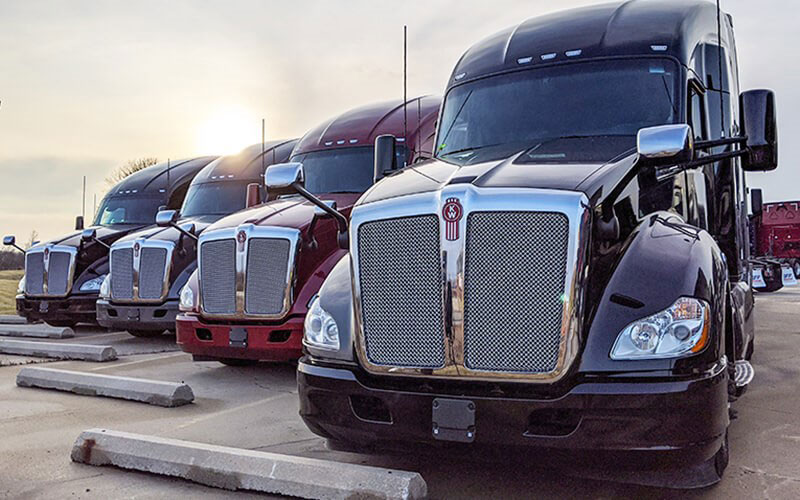Table of Contents
Wait! Ready to embark on your delivery journey, right? Hope you examine your CDL pre-trip inspection. Oh, you don’t know what CDL pre-trip inspection means, right?
The Commercial Driver’s License Pre-Trip Inspection is a crucial aspect of ensuring road safety, compliance, and the smooth operation of commercial vehicles. This comprehensive examination, conducted before each journey, involves meticulously scrutinizing your commercial vehicle to identify potential issues that could compromise safety or result in costly breakdowns.
Why should you prioritize this pre-trip inspection? Well, consider it your first line of defense against accidents, fines, and unexpected repairs. By taking the time to inspect your vehicle thoroughly, you significantly reduce the risk of accidents caused by faulty equipment, ensuring the safety of yourself, your cargo, and other road users.
So, how do you perform a commercial driver’s license pre-trip inspection? Start by examining critical components such as brakes, tires, lights, steering, and suspension. Look for signs of wear, damage, or malfunction. Document your findings, and if you discover any issues, address them promptly to avoid complications during your journey.
The benefits of this inspection are numerous. Not only does it enhance safety, but it also minimizes downtime and repair costs. Compliance with regulations becomes second nature, and your professional reputation as a responsible driver soars.
Here is the commercial driver’s license pre-trip inspection you must perform before embarking on your truck journey:
- Exterior Inspection
- Engine Compartment Inspection
- Inside the Cab Inspection
- Trailer Inspection (if applicable)
- Side and Back of the Truck Inspection
- Cargo Inspection (if applicable)
Recap
>>>MORE: CDL Class A in Cab Inspection
1. Exterior Inspection
When assessing a vehicle’s overall state, it’s crucial to adhere to a comprehensive checklist. Firstly, check the general condition of the vehicle. This entails a thorough visual examination, taking note of any anomalies. Secondly, inspect the condition of the tires. Pay close attention to the tread depth and any visible damage on the tire surface. In addition, closely examine the wheels and rims for any signs of damage or missing lug nuts, as these can affect the vehicle’s stability and safety.
Moving on, scrutinize the suspension system for any visible issues that might compromise ride quality or safety. Lastly, perform a meticulous check for any loose or missing parts on the vehicle, as these could potentially lead to malfunctions or safety hazards. By adhering to this methodical approach, you ensure the vehicle’s reliability and safety are maintained to the highest standards.
2. Engine Compartment Inspection
When performing vehicle maintenance, follow a systematic approach. Start by checking for any fluid leaks; this includes inspecting for oil, coolant, or fuel seepage. Ensure that belts and hoses are in optimal condition and correctly connected to avoid potential breakdowns. In addition, confirm that engine oil, coolant, and power steering fluid levels meet the required standards to keep your vehicle running smoothly.
Lastly, inspect your vehicle for any visible damage or loose components. Addressing these issues promptly prevents further damage and ensures your safety on the road. Regular checks like these not only extend the lifespan of your vehicle but also reduce the likelihood of unexpected breakdowns, making them essential practices for any responsible vehicle owner.
3. Inside the Cab Inspection
To maintain your vehicle’s safety and functionality, it is imperative to adhere to a routine checklist of tasks. First and foremost, ensure that all mirrors are clean and properly adjusted. This small yet crucial detail significantly contributes to your visibility and overall safety on the road.
Moving on to the dashboard, meticulously check the condition and operation of all gauges and controls. These instruments provide essential information about your vehicle’s status, helping you make informed decisions while driving.
Equally vital are the horn, windscreen wipers, and all lights, including headlights, taillights, brake lights, and turn signals. Regularly verify that it’s in perfect working order, as these components are vital for communication and visibility with other drivers.
Never overlook the parking brake and service brake; testing them for proper operation is essential. These brakes are your primary means of control, especially in emergencies.
Lastly, pay attention to driver comfort and control. Make sure the steering wheel and seat are properly adjusted. A comfortable and ergonomic driving position not only enhances your experience but also minimizes fatigue, contributing to safer travel. Incorporating these practices into your vehicle maintenance routine ensures a safer and more enjoyable driving experience.
4. Trailer Inspection
When inspecting a trailer, examine its tires, brakes, lights, and suspension meticulously. Begin by checking the tires for any signs of wear, damage, or low pressure. Make sure they’re properly inflated for safe travel. Next, inspect the brakes to ensure it is in good working order, free from any issues that could compromise stopping power. Verify that all lights, including brake lights and turn signals, are functional for clear communication on the road.
Moving on, examine the trailer’s suspension system. Look for signs of wear, loose components, or leaks. A well-maintained suspension ensures smoother rides and stability during transportation.
Once you’ve complete the trailer inspection, shift your focus to the connection between the trailer and the tractor. Ensure that it is securely fastened, double-checking all hitching points and pins. Confirm that all safety connections, such as safety chains and emergency brakes, are properly in place and functioning as intended. This comprehensive inspection process guarantees the safety and reliability of your trailer for the journey ahead.
>>>PRO TIPS: Air Brakes Explained CDL
5. Side and Back of the Truck Inspection
Inspecting the side and back of a truck is a crucial aspect of ensuring road safety and compliance with transportation regulations. This inspection involves a thorough examination of both sides and the rear of the truck to identify any potential issues or hazards.
On the side of the truck, check for damage to the body, including dents, scratches, or any signs of wear and tear. This examination also includes verifying the condition of the tires and ensuring it’s properly inflated and not damaged. The side mirrors and lights must be functional and properly adjusted for optimal visibility.
Moving to the back of the truck, inspectors need to assess the condition of the rear doors or cargo area. This includes checking for any loose or damaged hinges, locks, or seals that could compromise the security of the cargo. Lights and reflectors at the rear must be operational to enhance visibility, especially during nighttime driving.
6. Cargo Inspection (if applicable)
Examine the cargo to ensure it’s properly secured, distributed, and not leaking or damaged. Start by ensuring it is properly secured. Check all restraints and fastenings to prevent any potential shifting during transport. Next, distribute the weight evenly to maintain balance and stability, reducing the risk of accidents. Be vigilant to detect any signs of leakage, as even minor leaks can escalate into hazardous situations. Lastly, meticulously inspect for any damages, no matter how minor it seems, as it can compromise the cargo’s integrity. Remember, in cargo handling, meticulous examination is paramount to guaranteeing safety and successful transportation.
Recap
Conducting a Commercial Driver’s License (CDL) pre-trip inspection is a critical practice for ensuring road safety and regulatory compliance. This essential routine safeguards against potential mechanical failures, minimizing accidents, and ensures the well-being of your truck.
A thorough pre-trip inspection involves checking tires, brakes, lights, and various vehicle components. This meticulous process assures that your vehicle is in optimal working condition, reducing the risk of breakdowns on the road.
The CDL pre-trip inspection is not just a checklist; it’s a duty to oneself and society. It’s a testament to responsible driving and a commitment to maintaining the highest standards in the transportation industry.



















